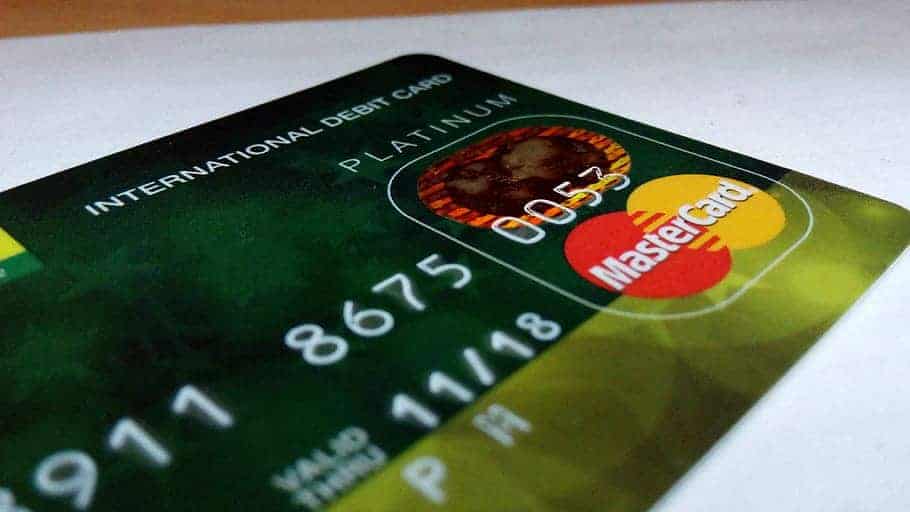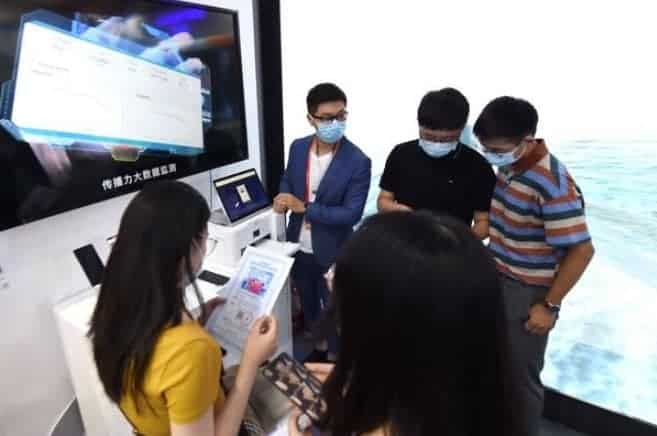In this issue
- IRS takes aim at protocols like Monero and Lightning Labs
- DeFi offers Sashimiswap chaser after gagging on Sushi
- MasterCard launches platform for trying out digital currency
- In China: OKLink’s free cryptocurrency tracker; trade fair brings blockchain ideas to 20,000 companies
- Funding spotlight: Singapore
From the Editor’s Desk
Dear Reader,
You gotta love the irony. Criminals are helping law enforcement identify which mole to whack. And while the mole might feel wrongly targeted, it is yet another example of where an ounce of prevention can be worth a pound of cure. I’m talking about privacy coins.
This past week, the IRS has issued a bounty of sorts — reward money — to help it trace transactions involving privacy tokens and Layer-2 network protocols. That’s because these seem to be the preferred payment modes of choice for drug dealers and other criminals. Once again, the perception of this technology as a lawless Wild West is highlighted. However, it would be wrong to not equally highlight the other developments in the blockchain space that counteracts this narrative. For instance, how blockchain is helping reform labor practices, promote sustainability and include the traditionally excluded (which I’ll be speaking about with some notable panelists at the Global Blockchain Business Council’s upcoming Blockchain Central UNGA — an official partner of the UN Foundation’s Global Goals Week that brings together leading voices in technology, policy, and business to discuss the role of technology).
That’s what we do at Forkast.News. We give you a deeper understanding of this technology with all its potential and flaws, the beauty in the vision and complexities in its execution.
Thanks for taking the time to read us every week. Do let us know what you think, what you like and what might be more helpful. Drop us a line anytime: hello@forkast.news.
Until the next time,
Angie Lau,
Founder and Editor-in-Chief
1. IRS targets privacy coins

By the numbers: IRS — 1,350% increase in Google search volume.
The U.S. Internal Revenue Service (IRS) has placed a US$ 625,000 target on the backs of privacy coins and Layer-2 network protocol transactions such as Monero and Lightning Labs. The monetary reward is being offered to contractors who can help the IRS trace criminal activity made possible through privacy-focused cryptocurrencies such as Monero (XRM).
- The IRS says it is seeking outside help as the agency has “limited investigative resources” for tracing such transactions.
- This bounty program is coming at a time of rising demand for privacy coins along with an increase in illicit activities. For example, Sodinokibi, a ”ransomware as a service” (RaaS) group, recently began directing ransoms to be paid through XRM rather than the more-traceable bitcoin.
Forkast.Insights | What does it mean?
While cryptocurrency is becoming an institutional grade asset, it’s also the capital of choice for organized crime as well as lone wolf cyber crooks. The dark web relies on customers’ ability to pay for illicit goods or services anonymously, and for the sellers to get paid and cash out without leaving a digital paper trail for law enforcement or the tax man to follow.
The drug lords and other criminals of the dark web have mastered the ability to ply their trade with discretion. Despite the high profile busts over the past decade, there are still 30 active markets, according to data aggregator Darknet Live. According to Chainalysis, darknet markets collectively amount to a $800 million a year business, and while revenue is stable, the number of transactions is increasing — meaning, the customer base is expanding.
But for many drug dealers and other criminals, their online discretion ends with the transaction itself. Flashy and expensive toys are the norm as criminals flaunt their earnings. Alexandre Cazes, the late boss of darknet market AlphaBay, had a taste for fast cars and luxurious real estate that caught the eye of authorities in Thailand where he resided. And let’s not forget the original “Scarface” gangster Al Capone, who loved his Miami mansion and quite famously was taken down not by the FBI but rather the IRS.
2. After gagging on SUSHI, DeFi serves up Sashimiswap

By the numbers: Sashimiswap — 5,000% increase in Google search volume.
Last week in the Game of DeFi Thrones, we saw SUSHI’s nosedive take Uniswap down, off DeFi’s Total Value Locked (TVL) leaderboard. This week, the anonymous creator of SushiSwap, Chef Nomi, returned US$14 million worth of ETH, as Aave sits on top of the throne with almost US$1.5 billion in TVL. In the meantime, blockchain network ælf introduces a SushiSwap spinoff, SashimiSwap.
- @aelfblockchain:
- “Dear #aelf community members and all #DeFi lovers, here’s a sneak peek of SashimiSwap, a new SushiSwap with cross chain features developed by blockchain project ælf. Super simple #DeFi, no pre-mining, fair launch, & high yield! #Blockchain3_0.”
- ConsenSys Managing Director for Global Business Technology Development, Strategy and Operations @JohnLilic:
- “The #SushiSwap Sushi mania has major implications for everyone bc if the system proves sustainable then $SUSHI P/S (rev/mkt cap) will either sky rocket or others will crash bc most other #defi tokens are trading at much bigger P/S multiples w/ much lower revenue & volume/mkt cap.”
Forkast.Insights | What does it mean?
DeFi liquidity pools like SushiSwap, SashimiSwap, whateverswap make collateralized debt obligations — those ticking time bombs that blew up Wall Street and huge swaths of global finance just over a decade ago — look like child’s play, and amazingly enough, CDOs were a wholly regulated financial instrument. We know precisely who offered them and exactly what was in them. The logic behind the underlying asset was faulty in retrospect, but all of this was laid out in regulatory documentation like prospectuses.
“Basically a worst case scenario for DeFi is the ICO bubble of 2017 combined with the Great Financial Crisis of 2008,” Alex Svanevik, CEO of blockchain analytics firm Nansen, told Forkast.News media partner Decrypt. But despite the signs of a bubble forming, Nansen adds “it’s also quite different from the 2017 ICO bubble in a few key ways.”
What’s going to happen to these liquidity pools when there’s a sharp correction in cryptocurrency asset prices combined with a decline in user signups? The lack of fresh capital flow and the overall decline in value would mean that the liquidity pools can no longer support their leverages. Which means the whole thing will collapse. In a proper, registered security offering, there would be documentation that outlines all of these risks and models that show at what point things would collapse. But in DeFi, there’s none of that because there’s no regulatory requirement to provide it. Whales will continue to get richer, setting up bagholders to lose out when the collapse happens.
3. Mastercard offers CBDC pretend play

By the numbers: Mastercard — 4,500 % increase in Google search volume.
Mastercard has launched a central bank digital currency (CBDC) virtual testing platform for central banks to simulate CBDC ecosystems and evaluate use cases. The platform can simulate distribution, issuance and central bank digital currency transactions between financial services providers and consumers as well as a prospective CBDC interface with traditional payment networks.
- “Mastercard is driving innovation with the public sector, banks, fintechs, and advisory firms in the exploration of CBDCs,” said Raj Dhamodharan, Mastercard’s executive vice president of digital asset and blockchain products. “This new platform supports central banks as they make decisions now and in the future about the path forward for local and regional economies.”
- “Collaborations between the public and private sectors in the exploration of [CBDCs] can help central banks better understand the range of technology possibilities and capabilities available with respect to CBDCs,” said Sheila Warren, head of blockchain at the World Economic Forum.
Forkast.Insights | What does it mean?
MasterCard and other credit card companies have value because their intricate network of technical infrastructure — called payment rails — allows anyone to pay a merchant almost anywhere in the world (aside from Cuba, Iran, North Korea, Syria and Venezuela). Naturally MasterCard, which is in the business of moving capital around the world, would be interested in CBDCs, as its customers in the future will be spending state-issued digital currencies via MasterCard.
Interestingly, MasterCard’s efforts to join the CBDC fray comes after the company withdrew from Libra — citing regulatory pressure. In many ways, CBDCs can do what Libra had initially proposed, but with tacit governmental oversight and approval.
4. In China: Trade fair introduces blockchain to 20,000 companies; OKLink offers free cryptocurrency tracker

The Chinese International Fair for Trade in Services (CIFTIS), which took place Sept. 4 to 9, introduced blockchain-based services to more than 20,000 enterprises.
- The event showcased blockchain’s uses in IP protection and supply chains. It also featured a blockchain-based platform for trade finance developed by the Digital Currency Institute (DCI), the research arm of PBOC. Launched in September 2018, the real-time ledger provides trade financing services. The platform is currently used by 48 commercial banks and facilitates over 50,000 business transactions with a cumulative volume of more than 181.6 billion yuan, according to local media.
- The fair — jointly organized by the Ministry of Commerce and Beijing Municipal Government — is China’s first major international economic and trade event held since the Covid pandemic outbreak.
Forkast.Insights | What does it mean?
As most of the world wonders when in-person trade shows will finally happen again, in China they already are — and blockchain (perhaps symbolically) was high on the agenda at the nation’s first return to live trade shows.
China has around 35,000 blockchain companies (though there are questions as to how many are actually legitimate) and the industry is a pillar of China’s post-Covid recovery. As China relaunches in-person physical trade shows, it will be interesting to see which are viewed as more useful conduit of business.
There are dozens of trade shows happening around the world as we speak, most of them are virtual. But do participants really care as much about a virtual showfloor as they do the real thing? Could the lower cost of entry for virtual trade shows encourage more small vendors, no matter where they are located in the world, to participate? How is the ROI different for stakeholders at a virtual conference?
The blockchain industry in the West wants conferences, but it will have to do it virtually until there’s a Covid vaccine available. As we’ll have conferences, real and virtual, going on side-by-side, it will be interesting to see which kind will turn out to be the more fruitful for the parties involved.

OKLink, a Beijing-based blockchain information provider, launched a cryptocurrency flow tracker open to all users for free.
- Entering the transaction hash and adjusting the scope of transfer amount, the tracker is able to draw a transaction graph and analyze the address. It can also monitor and issue alerts for transactions.
- The cryptocurrency flow tracker service was introduced at the CIFTIS trade show, according to Beijing Daily, a Chinese Communist Party mouthpiece. It reports that the OKLink tracker service will help combat money-laundering and points out that China is aiming to export blockchain-based technical solutions to the world.
Forkast.Insights | What does it mean?
Analytics software for cryptocurrency transactions isn’t really anything new. As we discussed earlier in this week’s Current Forkast newsletter, there’s a huge interest from governments in platforms like this to cut down on cryptocurrency-related money laundering and organized crime.
In China, the law of the land permits cryptocurrency mining and ownership but prohibits crypto trading. Despite this prohibition, the cryptocurrency industry (and DeFi too) is alive and well in the country, with some of the world’s biggest exchanges having a strong nexus to China while flying a flag of corporate convenience. Beijing knows this — and using trackers like OKLink, may be gearing up to collect taxes from traders in-country that are racking up the capital gains.
5. Funding spotlight: Singapore
XanPool — Singapore, seed, US$4.3 million
XanPool, a Singapore based fiat-crypto payment processor, announced this week that it had closed a seed round worth $4.3 million led by OKEx’s OK Group. HashKey also participated in the round. According to a release, XanPool “provides a unique omni-channel solution to make the onboarding and offboarding infrastructure in crypto much more user friendly, and resilient against single channel dependency, such as over-reliance on banking partners.” XanPool says that it has a user base of 75,000 across Southeast Asia, and it’s looking to expand into Pakistan, Bangladesh, Russia, Japan, Korea, Australia and New Zealand.
Forkast.Insights | What does it mean?
XanPool is coming into the market at the right place and time. During the past year, we’ve seen two themes emerge when it comes to the need for effective crypto-fiat payment processors: the continued use of cryptocurrency as a tool of remittance within Southeast Asia (Indonesia’ BRI has previously invested in getting Ripple into its software stack) to reduce friction costs for overseas workers, as well as the rapid explosion of stablecoins as a tool of crypto liquidity. Both require an eventual fiat offramp, and XanPool is correctly capitalizing on the potential of the moment.




